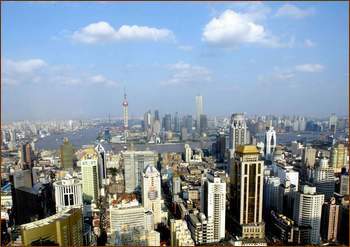Scientists have developed a three-dimensional map of Shanghai's underground geology, which they say will help authorities tackle the problem of subsidence.
Wei Zixin, director of the Shanghai Institute of Geological Survey, said that although recent figures had shown the rate of subsidence was falling, it remained a problem.
The city of Shanghai
However, with the new map, areas that are most at risk can be quickly identified and appropriate action taken.
Speaking at a forum on geological studies held in Shanghai on Wednesday, Wei said that once an area has been identified, water can be pumped underground to boost the groundwater level.
By doing so, the city's skyscrapers will be free from the threat of subsidence for up to 100 years, he said.
According to figures presented at the forum, in 2004, Shanghai sunk 7.76 mm, and this year 7.5 mm. With the help of the new map, which details 6,700 sq km of the city's subterranean environment, the level could be cut to just 5 mm by 2010, Wei said.
While helping reduce the threat of subsidence, the map can be used by planners to determine the most suitable areas for construction and the selection of digging routes, he said.
Subsidence has been a longstanding problem in Shanghai, mostly as a result of the over-exploitation of underground water and the construction of skyscrapers, Wei said.
More than 1,000 square kilometers of the city have been affected by subsidence, with the most serious case seeing the ground level fall by 2.6 meters.
Although hot springs have been discovered in five separate areas of Shanghai, Sun Jianzhong, director of the information department at the city's urban development information center, has warned against exploitation of the natural resource.
"The priority must be to protect Shanghai's water environment, not exploit it," he said yesterday.
Shanghai is built on the alluvial plain of the Yangtze River and any exploitation of underground water has a serious impact on the geological environment and can cause subsidence, Sun said.
In a bid to halt the city's slow decline, the municipal government has introduced various measures including limiting the exploitation of underground water sources and pumping water into the subsurface.
Industrial consumers of water have also been moved out of the downtown area and are required to draw water from deep underground.
(China Daily November 23, 2007)






